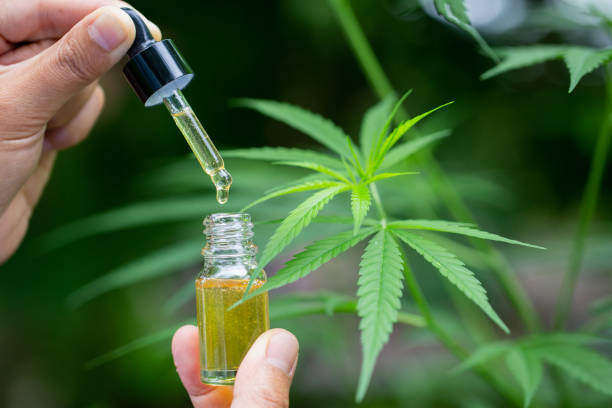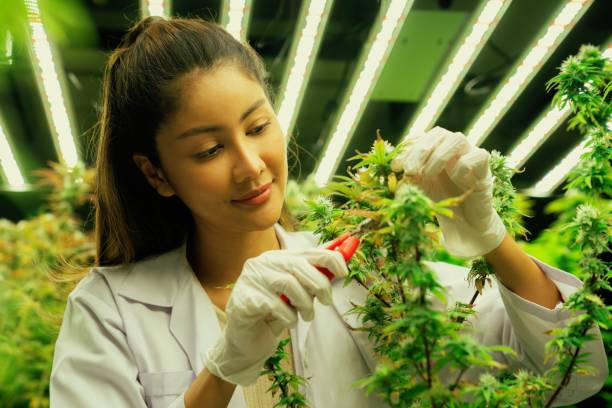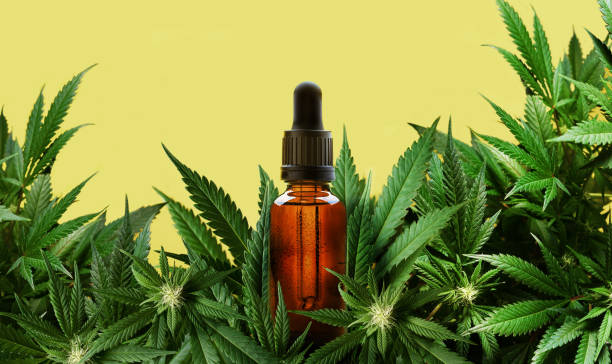A Journey Through History: Cannabis Tincture And Its Significance In Medicine
Cannabis tincture has a long and complex history in medicine. For centuries, it was widely used as a treatment for various ailments, ranging from pain relief to epilepsy. Its use declined in the 20th century due to prohibition and the rise of synthetic drugs, but it is now experiencing a resurgence as more states legalize medical cannabis.
The chemical composition and pharmacology of cannabis tincture have been studied extensively over the years, leading to a better understanding of its therapeutic properties. Current research suggests that it may be effective in treating a range of conditions, including chronic pain, anxiety disorders, and even cancer. With increasing interest in natural remedies and alternative forms of healthcare, cannabis tincture is poised to play an important role in modern medicine once again.
Traditional Use of Cannabis Tincture
The traditional use of cannabis tincture in medicinal practices dates back centuries and involves the extraction of various cannabinoids from the plant to treat a range of ailments and conditions. Historically, cannabis tinctures were commonly used for pain relief, sedation, and as an anticonvulsant. In ancient China, for instance, cannabis was used to treat rheumatic pains and malaria. In India, it was used as an analgesic and antispasmodic agent.
In Europe and America during the 19th century, cannabis tincture was prescribed by physicians for a diverse range of medical conditions such as menstrual cramps, asthma attacks, migraines, insomnia, gastrointestinal disorders like dysentery and cholera among others. The popularity of cannabis extracts declined when synthetic medications were developed in the early 20th century. However recent research has shown that there is still potential for using traditional forms of cannabis such as tincture in modern medicine.

Chemical Composition and Pharmacology
This section provides an overview of the chemical composition and pharmacological properties of cannabis tincture, including its active compounds, their mechanisms of action, and potential therapeutic effects. Cannabis tincture contains more than 100 cannabinoids, terpenes, and flavonoids that work together to produce various physiological effects. The two most well-known cannabinoids found in cannabis tincture are delta-9-tetrahydrocannabinol (THC) and cannabidiol (CBD). THC is responsible for the psychoactive effects of cannabis, while CBD has been shown to have anti-inflammatory, analgesic, anxiolytic, and antipsychotic properties.
The pharmacological actions of cannabis tincture are mediated by the endocannabinoid system (ECS), which consists of cannabinoid receptors (CB1 and CB2), endogenous ligands such as anandamide and 2-arachidonoylglycerol (2-AG), and enzymes involved in their synthesis and degradation. THC binds primarily to CB1 receptors located in the brain and central nervous system (CNS), producing a feeling of euphoria or "high." CBD has a low affinity for CB1 and CB2 receptors but can modulate their activity indirectly by inhibiting enzymes that break down endocannabinoids or by interacting with other receptor systems such as serotonin receptors. Through these mechanisms, cannabis tincture may offer potential therapeutic benefits for conditions such as chronic pain, epilepsy, multiple sclerosis, anxiety disorders, post-traumatic stress disorder (PTSD), and schizophrenia. However, further research is needed to establish the safety profile and optimal dosing regimen for different patient populations.
Current Research on Medical Applications
Research on the medical applications of cannabis tincture is constantly evolving, with ongoing studies investigating its potential use in treating a variety of conditions. One area of research has focused on the use of cannabis tincture for chronic pain management. Studies have shown that cannabis tincture may be effective in reducing chronic pain associated with conditions such as multiple sclerosis, neuropathic pain, and arthritis.
In addition to its potential for chronic pain management, cannabis tincture has also been studied as a treatment option for inflammation and anxiety disorders. Some studies suggest that cannabis tincture may be able to reduce inflammation by suppressing pro-inflammatory cytokines. Additionally, some individuals report using cannabis tincture to alleviate symptoms of anxiety disorders such as panic attacks and social anxiety. However, further research is needed to fully understand the potential benefits and risks of using cannabis tincture for these conditions.
Legalization and Regulation
The legalization and regulation of cannabis has been a hotly debated topic for decades. While state laws have gradually become more permissive, the federal government still classifies marijuana as a Schedule I drug with no accepted medical use. As such, there are many challenges associated with balancing the demands of medical versus recreational use, ensuring quality control and safety standards are met, and navigating complex legal frameworks at both the state and federal levels.
State and Federal Laws
State and federal laws surrounding cannabis tincture have been consistently contentious throughout history, reflecting a complex interplay between medical practice, social norms, and political interests. The legal status of cannabis tincture has varied widely across different states in the US. Currently, 36 states have legalized medicinal cannabis use while 15 have legalized recreational use. However, the federal government maintains that cannabis is illegal under the Controlled Substances Act (CSA), which classifies it as a Schedule I substance alongside heroin and LSD due to its high potential for abuse and lack of accepted medical use.
This contradiction between state and federal law creates significant challenges for patients who rely on cannabis tincture for their medical needs. While state laws provide some degree of protection for these individuals, they may still face legal consequences at the federal level. Additionally, this legal ambiguity hinders scientific research into the potential benefits of cannabis tincture by creating barriers to funding and regulatory approval. As such, there is a growing movement to reform federal drug policy around cannabis tincture in order to better reflect current scientific understanding and patient needs.
Medical vs. Recreational Use
As previously discussed, the legal landscape surrounding cannabis has been a complex and evolving issue. While state laws have become more permissive in recent years, federal laws still classify cannabis as a Schedule I drug, which hinders its medicinal potential from being fully realized. However, even within the states that have legalized cannabis for medical or recreational use, there are distinct differences between how it is utilized.
Medical use of cannabis involves using specific strains of the plant for their therapeutic benefits under the guidance and supervision of a licensed healthcare professional. Patients may use cannabis to alleviate symptoms associated with conditions such as chronic pain, epilepsy, multiple sclerosis, and cancer. On the other hand, recreational use refers to using any strain of cannabis solely for its psychoactive effects without any specific health concerns in mind. While both uses involve consuming THC (tetrahydrocannabinol), the main psychoactive compound found in cannabis plants, medical use often involves lower doses and different methods of consumption compared to recreational use. Understanding these distinctions is important for healthcare providers and policymakers alike when considering how best to regulate cannabis usage across various contexts.
Quality Control and Safety
Ensuring quality control and safety measures in cannabis production, distribution, and consumption is essential for promoting responsible use across medical and recreational contexts. As with any medicine or substance, the efficacy of cannabis depends on its purity, potency, and consistency. Lack of standardization in production can result in varying levels of active compounds such as THC or CBD, which can lead to unpredictable effects on patients or consumers. This lack of consistency also poses a challenge for healthcare professionals who need to prescribe accurate dosages based on specific conditions.
Moreover, the issue of safety extends beyond the chemical composition of cannabis products. Contamination from pesticides or other harmful chemicals used during cultivation can have detrimental effects on health. Inadequate packaging and labeling practices may also lead to accidental ingestion by children or pets. Addressing these concerns requires strict regulations that ensure proper testing protocols for potency and purity while requiring clear labels detailing dosage instructions and potential risks associated with use. By implementing these measures, we can mitigate potential risks associated with cannabis consumption while ensuring patients receive safe and effective treatment options.

Future of Cannabis Tincture in Medicine
The future of cannabis tincture in medicine holds immense potential for new discoveries, challenges and opportunities. As research on the therapeutic benefits of cannabis continues to emerge, it is likely that more uses for this ancient remedy will be uncovered. However, in order to fully realize its potential, patient education and advocacy will need to play a crucial role in overcoming legal and social barriers.
Potential for New Discoveries
This section highlights the possibility of uncovering new medical applications for cannabis-based tinctures through ongoing research and clinical trials. The potential of cannabis tincture in medicine is vast, as it contains various cannabinoids that have therapeutic effects on different ailments. Currently, researchers are exploring the use of cannabis tincture in treating chronic pain, anxiety disorders, epilepsy, and other neurological conditions.
Moreover, as more countries legalize cannabis for medical purposes, there is a growing demand to explore its therapeutic potential fully. This has led to an increase in funding for scientific studies on the medicinal properties of cannabinoids found in cannabis tinctures. With these developments, it is expected that we will discover even more applications of this ancient remedy in modern medicine. However, despite increasing evidence supporting the efficacy of cannabis tincture as a treatment option for several health conditions, further research is required to determine its safety and long-term effects on human health.
Challenges and Opportunities
The challenges in exploring the full therapeutic potential of cannabis-based tinctures stem from the fact that their use and effects have not been extensively studied. The safety concerns associated with the consumption of these tinctures must be addressed before they can be widely used in medicine. It is important to determine the appropriate dosage, administration method, and long-term effects of these tinctures to ensure that patients receive optimal care.
On the other hand, there are also opportunities associated with the exploration of cannabis-based tinctures as a potential treatment for chronic conditions. These tinctures may offer an alternative to traditional medications that often come with unwanted side effects. Furthermore, their use may provide relief to patients who have exhausted all other treatment options without success. Overall, while there are significant challenges and risks involved in researching and using cannabis-based tinctures in medicine, their potential benefits make them an exciting avenue for further study.
Patient Education and Advocacy
Patient education and advocacy play crucial roles in promoting the responsible use of cannabis-based products, particularly tinctures, as potential treatments for chronic conditions. Patients need to be well-informed about the potential benefits and risks of using cannabis tinctures for medical purposes. Healthcare professionals can provide patients with accurate information about dosage, administration, and possible side effects of cannabis-based products. Additionally, patient advocacy groups can help raise awareness about the therapeutic potential of cannabis tinctures while advocating for safe access to these products.
Advocacy efforts can also help push for more research into the medicinal properties of cannabis tinctures. There is a growing body of evidence supporting the use of cannabis for treating various medical conditions such as pain, anxiety, and nausea. However, there is still a lack of clinical data on the long-term effects of using these products. Advocacy groups can work with researchers to support studies that explore the safety and efficacy of cannabis tinctures as alternative treatments for chronic health conditions. By educating patients and advocating for increased research, we can promote responsible use while expanding our understanding of this ancient medicine's vast healing potential.
Conclusion
In conclusion, the journey of cannabis tincture in medicine has been a long and complex one. From its traditional use as a remedy for various ailments to its temporary ban during the early 20th century, cannabis tincture has undergone many changes in perception and regulation. However, with recent scientific advancements and growing acceptance of medical marijuana, cannabis tincture is once again gaining recognition for its potential therapeutic benefits.
While research on the medical applications of cannabis tincture is still ongoing, initial studies have shown promising results in treating conditions such as chronic pain, inflammation, anxiety, and epilepsy. As more states legalize medicinal marijuana and regulations become more standardized, it is likely that we will see an increase in the availability and accessibility of cannabis tinctures as a viable alternative treatment option for patients. Overall, the future looks bright for this ancient remedy as it continues to evolve alongside modern medicine.
If you're looking for more ideas about this topic, feel free to check this blog post from Local Product of Colorado.

